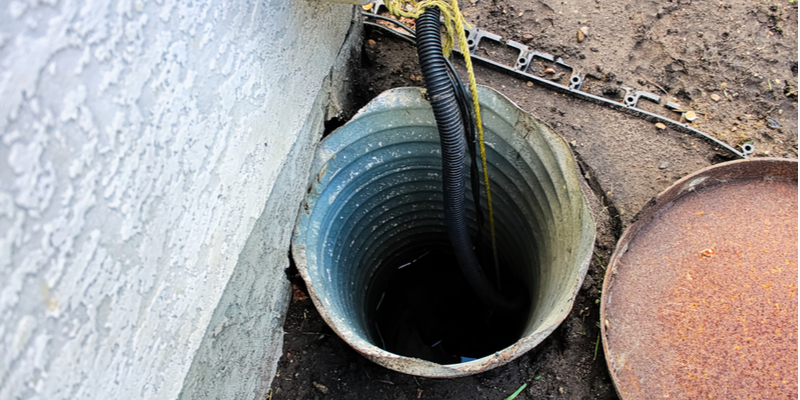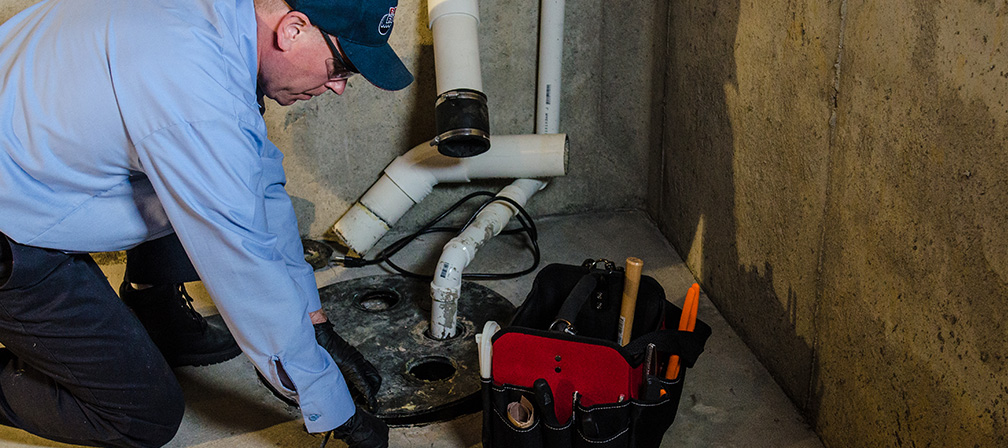Easy-to-Follow Instructions for Servicing a Sump Pump
Easy-to-Follow Instructions for Servicing a Sump Pump
Blog Article
Just how do you really feel when it comes to How to Care for Your Sump Pump?

Sump pumps are essential components in numerous homes, specifically in areas susceptible to flooding or excessive dampness. They assist prevent water damages by effectively removing excess water from cellars or crawl spaces. However, like any other device, sump pumps need normal upkeep to guarantee they work efficiently when required one of the most. Cleansing your sump pump is a crucial part of its upkeep, and understanding how to do it appropriately can conserve you from pricey repair work and possible calamities.
Intro
Keeping a tidy sump pump is vital for its appropriate performance and durability. Neglecting this crucial job can lead to clogs, malfunctions, and inevitably, water damages to your property. For that reason, learning just how to clean a sump pump is essential for homeowners who rely on these gadgets to maintain their basements completely dry and protected.
Signs of a Dirty Sump Pump
Recognizing when your sump pump needs cleansing is vital for avoiding prospective malfunctions. Some typical signs that suggest a dirty sump pump include unusual noises throughout procedure, lowered water circulation, and visible particles in the pit. If you see any of these signs, it's important to cleanse your sump pump promptly to stay clear of any type of further concerns.
Planning for Cleaning
Before you start cleaning your sump pump, it's essential to take some security preventative measures. Begin by shutting off the power to the pump to prevent any kind of electrical mishaps. In addition, wear suitable protective equipment, such as handwear covers and safety glasses, to protect yourself from dust, particles, and potential pathogens.
Understanding the Sump Pump
Before diving into the cleansing procedure, it's vital to have a standard understanding of just how a sump pump works. Commonly mounted in a pit or basin listed below the basement floor, a sump pump contains a number of essential elements, including a pump, a float button, and a discharge pipeline. When water gathers in the pit, the float switch turns on the pump, which then pumps the water out with the discharge pipeline, away from the structure's structure.
Step-by-step Guide to Cleansing a Sump Pump
Shutting Off the Power
Begin by detaching the power supply to the sump pump to prevent any kind of crashes while cleaning.
Checking for Appropriate Functioning
Prior to re-installing the pump, perform a quick examination to guarantee that the float switch activates the pump properly. Pour some water into the sump pit and observe the pump's procedure. If whatever is functioning properly, you can reconstruct the pump and reconnect the power supply.
Eliminating Debris and Dirt
Utilize a pail or an inside story to eliminate any type of visible debris, dust, or sediment from the sump pit. Dispose of the debris appropriately to prevent it from obstructing the pump or the discharge pipeline.
Cleaning the Pump and Float Switch Over
When the pit is clear of particles, meticulously get rid of the pump from the pit. Check the pump and the float button for any signs of damage or wear. Make use of a soft brush or towel to clean up the surfaces and eliminate any accumulated grime.
Purging the System
After cleaning the pump and float button, flush the sump pit with clean water to eliminate any type of remaining dust or debris. This will help guarantee that the pump operates efficiently and effectively.
Upkeep Tips to Maintain Your Sump Pump Clean
In addition to routine cleaning, there are several maintenance tips you can follow to keep your sump pump in optimal condition:
Conclusion
Cleansing your sump pump is an important element of its maintenance and guarantees that it runs effectively when you require it the most. By adhering to the steps outlined in this overview and incorporating normal upkeep into your regimen, you can extend the life expectancy of your sump pump and safeguard your home from water damages.
6 STEPS ON HOW TO CLEAN A SUMP PUMP PROPERLY
UNDERSTANDING SUMP PUMPS
Your sump pump plays a crucial role in protecting your home by managing and removing excess water. It primarily functions as a “shield”, guarding your basement against the damaging effects of water accumulation. The pump is housed in a sump pit in the lowest part of your basement, and its job is to pump out any water that collects there.
During heavy rainfalls or when snow melts rapidly, water can infiltrate your basement, posing potential risks like flooding, structural damage, and harmful mold growth. Here, the sump pump springs into action, pumping out the intruding water and directing it away from your home.
SAFETY FIRST
Before cleaning, remember to prioritize safety. Disconnect the sump pump from the power source to prevent any accidental electric shocks. Also, wear sturdy gloves to protect your hands from any sharp or dirty components within the pump.
REMOVE THE SUMP PUMP
After ensuring your safety, the next step is to remove the sump pump from its pit. Doing this might require careful maneuvering as you don’t want to damage any pump components. Once removed, clean the sump pit to remove any accumulated debris or sludge.
INSPECT THE PUMP
Inspect the pump for any visible signs of wear or damage. Check the power cord, float switch, and impeller housing. If any components look worn out or damaged, consider replacing them to ensure optimal performance.
CLEAN THE PUMP
Thoroughly clean the pump with warm, soapy water. Make sure to rid it of any dirt, gravel, or other debris that might impede its performance. You can use a toothbrush to clean the small, hard-to-reach parts of the pump.
REINSTALL THE SUMP PUMP
Reinstall the pump into the sump pit Make sure it’s positioned correctly to remove the water effectively Once it’s back in place, reconnect it to the power source TEST THE PUMP
Finally, pour some water into the pit to ensure the pump works correctly. It should start automatically and begin pumping out the water; if it doesn’t, check the power source and the positioning of the pump.
Remember, while cleaning your sump pump is an essential part of home maintenance, hiring a professional plumber for a thorough inspection and cleaning at least once a year is also important. This will ensure that your pump is in optimal condition, ready to protect your home from potential water damage.
BEST PRACTICES FOR CLEANING SUMP PUMP DISCHARGE PIPES
Regular Inspection: Regularly inspect your discharge pipes, especially during heavy rainfall or snowmelt periods. Look for any signs of blockage or damage. Early detection of problems can prevent serious issues down the line. Periodic Cleaning: Over time, sediment and debris can accumulate in the discharge pipes, impeding the flow of water. Regular cleaning helps keep the pipes clear and functioning efficiently. You can use a high-pressure water jet to effectively clean the pipes. Insulation During Winter: In colder climates, discharge pipes can freeze, blocking the outflow of water. Protect your discharge pipes from freezing temperatures by insulating them with foam pipe insulation. This will ensure the sump pump can continue to discharge water even in freezing conditions. Proper Positioning: The discharge pipe should be positioned to direct water away from your home’s foundation. Improper positioning can lead to water seeping back into the basement. Ensure the pipe is long enough and angled correctly. Installation of a Check Valve: A check valve prevents water from flowing back into your sump pit after the pump has pushed it out. Installing a check valve helps maintain the efficiency of your sump pump and reduces the risk of flooding. Minimize Pipe Turns: Every curve or turn in the discharge pipe can decrease the efficiency of water flow. By minimizing turns and bends in your discharge pipe, you can increase the efficiency of your sump pump. https://www.fullspeedplumbing.com/how-to-clean-a-sump-pump-properly9999/

We were made aware of that report on How to Care for Your Sump Pump through an acquaintance on a different website. Sharing is caring. Helping people is fun. I recognize the value of reading our article about .
Request Service Report this page